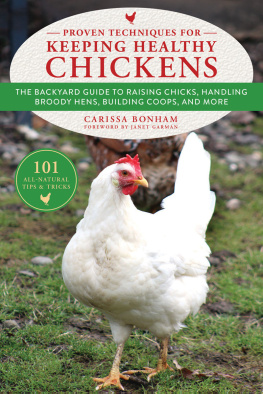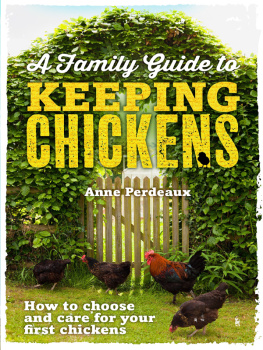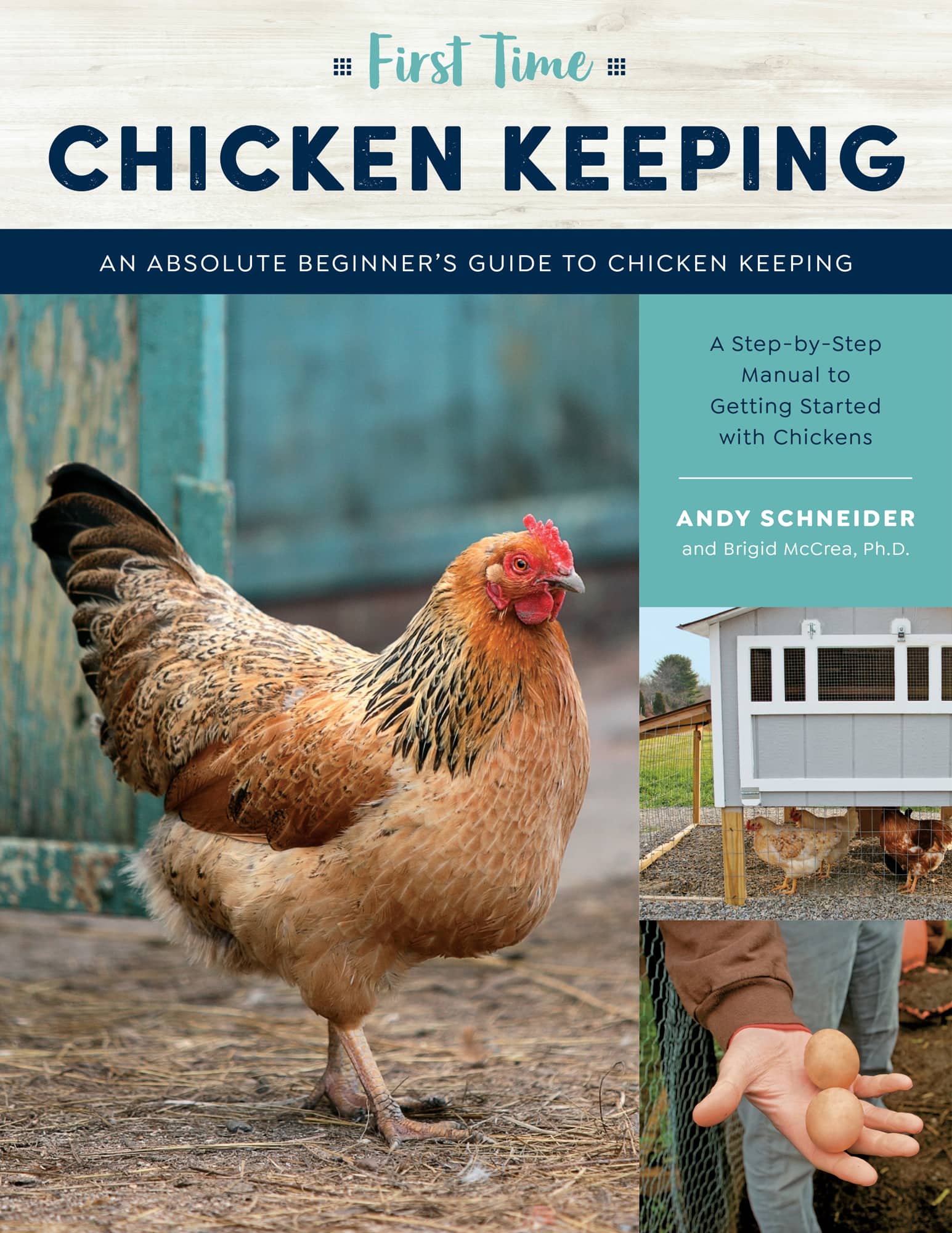Contents
Guide
First Time
CHICKEN KEEPING
AN ABSOLUTE BEGINNERS GUIDE TO CHICKEN KEEPING
A Step-by-Step Manual to Getting Started with Chickens
ANDY SCHNEIDER
and Brigid McCrea, Ph.D.

POWER TO THE POULTRY:
THE GROWING URBAN CHICKEN MOVEMENT
There is a fast-growing movement sweeping across the world. Its all about urban chickens, and thousands of people are joining every year.
Keeping chickens in urban backyards is nothing new, and was quite common at one time. The United States government, for example, encouraged it during the Great Depression, when food was harder to come by and a family had to provide for its members. When small grocery stores started popping up on every corner and began carrying ready-to-roast chickens and clean, white eggs, the need for a small backyard flock to feed the family dissipated.
The new urban chicken movement picked up steam in the mid-1990s and went full speed ahead by 2002. Chicken-related websites, blogs, and forums started to take off. Hatcheries started shipping out millions of chicks to backyards everywhere. Local urban chicken groups formed around the world, and today have anywhere from 50 to more than 2,000 members. To keep up with demand, feed-and-seed stores have increased store space reserved for poultry supplies, and a variety of books about urban chickens now flood the market. Andy even hosts a web radio show and podcast, Backyard Poultry with the Chicken Whisperer, during which he welcomes poultry experts from around the world to share their knowledge.
Who is responsible for the rebirth of the urban chicken movement? In our opinion, its the people involved in the green movement.
A backyard chicken coop in Los Angeles promotes a healthy lifestyle with fresher eggs and greener living.
People who live a greener, more ecofriendly lifestyle eat healthier, for the most part. They tend to buy a large portion of their food locally, and they understand that theres nothing more local than ones own backyard. Many already supply their families with homegrown vegetables from backyard gardens, so why not eggs from chickens, too?
The green movement may have initiated growth of the urban backyard movement, but people keep urban chickens for many reasons. In fact, the people joining the backyard chicken movement are quite the melting pot. Through local meetup groups, friendships form between people with absolutely nothing in common but keeping chickens for pets, eggs, composting, fertilizer, insect control, education, or meat. The movement is not based on economic status, age, gender, race, religion, ethnicity, political views, or any other label. No stereotype fits the people who keep urban chickens.
The urban farming movement has grown substantially in recent years.
AN UPHILL BATTLE
The urban chicken movement has faced its share of struggles. Hatcheries, for example, have strained to keep up with the growing interest. Since 2007, many have either been backlogged with orders or unable to fulfill them due to requests for rare breeds such as the French Black Copper Marans that sell out first and quickly. Chicken owners (or those who want to be) also face lawsfor example, a coop having to sit a specific distance from nearby occupied dwellingsor challenges such as having to get permission from neighbors to keep backyard poultry. We discuss the laws in detail in .)
The good news is that many smaller hatcheries have popped up to help meet demand while also providing income to entrepreneurs. Lawmakers are starting to change laws in favor of backyard poultry, thanks in part to work by newly formed groups that aim to educate lawmakers and the public. Plus, there are more opportunities from government agriculture departments and in books, videos, and on the radio to learn about diseases, sicknesses, and ways to reduce risk of illness in chickens.
Hatcheries have been backlogged with orders for would-be chicken owners as interest in the urban poultry market has soared.
Marans varieties are in high demand due to their striking colors. The French Maran Hens are increasingly more popular because of their darker, chocolate-colored eggs.
ADVANTAGES OF OWNING CHICKENS
The movement is continuing to grow. Is it a fad? We dont think so. As more people educate themselves about what foods they are eating, and what they are actually putting into their bodies, they are starting to look for options outside the supermarkets. Chickens can benefit suburban and rural landowners in so many ways.
FRESH EGGS
One of the top reasons for keeping backyard chickens is the endless supply of fresh, tasty eggs. More people today want to know where their food comes from and having backyard chickens allows them that luxury. As a chicken owner, you determine what goes into your chickens, which also gives you a pretty clear picture of what comes out.
A family can have a constant supply of fresh eggs with just a few chickens.
Grocery stores now stock a variety of eggs with different labels, each brand trying to convince you it is the best to buy. When we first noticed these, images popped into our heads about what those words meant. Free range, for example, must mean that the chickens are out in a pasture scratching for bugs, eating plants and supplement feed, and living a life unconfined. Organic must mean a similar situation but with feed sourced from a certified organic product.
As with any farm, there are good and bad managers; the best you can do is ensure that the food you buy came from someone you have personally met and whose farm you have visited.
CAGE-RAISED VERSUS BACKYARD POULTRY
A nonscientific study by Mother Earth News (www.motherearthnews.com/eggs) found that eggs from pasture-raised hens contain the following:
 One-third less cholesterol
One-third less cholesterol
 One-quarter less saturated fat
One-quarter less saturated fat
 Two-thirds more vitamin A
Two-thirds more vitamin A
 Two times more omega-3 fatty acids
Two times more omega-3 fatty acids
 Three times more vitamin E
Three times more vitamin E
















 One-third less cholesterol
One-third less cholesterol